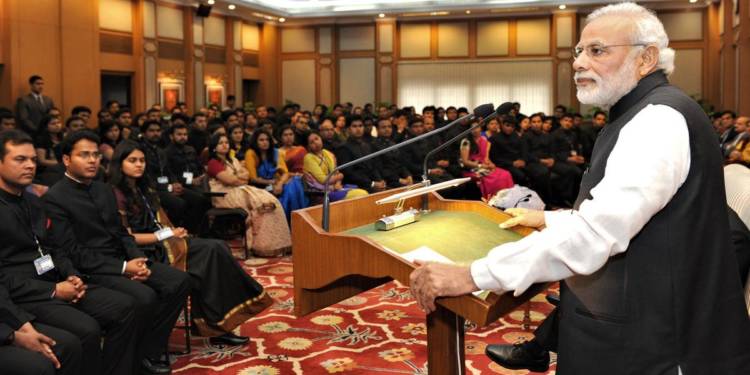One might not agree with Mahatma Gandhi’s views but there is general consensus on a few of his qualities like, ability to communicate to a large section of the population and a mass leader. His ability to communicate with people in the remotest corners of the country through spoken, written language or deeds made him a mass leader.
Gandhi always preferred to write very small sentences, irrespective of the language he was writing in and only used commonly known words. At the time when the educated elites of the country felt proud in conversing only in English, Gandhi wrote extensively in Hindi and Gujarati, to reach a larger number of people. Similarly, PM Modi is known for his effective communication techniques in simple language which makes him the most popular leader of the country in the last few decades.
But, the Indian bureaucrats, which take oath to follow the principles of Mahatma Gandhi at some point of her/his training or career, and are working for the development of the nation, never follow their one principle- to communicate in the simple language to reach a large number of people.
In the period of Coronavirus, there were 4,130 executive orders from states and the Centre as per PRS Legislative Research, and after every order, there was at least two or three clarification, and sometimes every clarification to clarification was issued, which is nothing but shame on bureaucrats’ communication abilities. As one can see in the following ANI tweet, ‘revised, updated, and corrected’ have become keywords for MHA notifications.
MHA issues updated consolidated revised guidelines after correcting the date from 20th May to 20th April 2020, on the measures to be taken by Ministries/Departments of Govt of India, State/UT governments & State/UT authorities for the containment of #COVID19 in India. (1/2) pic.twitter.com/nnaGKUrVZa
— ANI (@ANI) April 15, 2020
According to an article by Gopalkrishna Gandhi, grandson of Mahatma Gandhi, “Mahatma Gandhi wrote to convey, not to impress,” and this was the reason behind his successful communication. But the Indian bureaucrats follow the exact opposite- they write very long sentences, use jargon, and always use passive voice to avoid blame.

Take a look at the attached order released by Home Secretary of India, Ajay Bhalla. He has finished the second point of more than 100 words in just two lines, thanks to painfully long sentences. If the official orders are written in such complex language, it is very much possible that the journalists who disseminate the news might misinterpret it, and a wrong message is circulated.
The bureaucratic language is problematic not just in India but also many countries around the world are suffering from this. And the first casualty of bureaucratic language are journalists, whose credibility is lost due to misinterpretation of official orders. Bureaucratic language is an “egregious failure…[indicating] the degree to which American journalism is compromised by bureaucratic style,” wrote writer Colin Dicky.
Poynter Institute, one of the most prominent media houses considers bureaucratic language as one of the major problems in fair and accountable journalism.
Bureaucratic language, also known as Officialese or governmentese, distinguished by “a preference for wordy, long sentences; a preference for complex words, code words or buzzwords over simple, traditional ones; a preference for vagueness over directness and a preference for passive over active voice” has been a problem since the establishment of governments. It is so problematic to the common people that movement called “Plain language Movement” is going on against the bureaucratic language. This is such a huge problem that linguist Roger Shuy wrote a book titled ‘Bureaucratic Language in Government and Business’ to teach effective communication techniques to bureaucrats.
The bureaucrats are trained to complicate things rather than simplifying them. In the times of Coronavirus pandemic, when we have an over-reaching government, the orders prepared by babus are very important. But instead of simplifying the picture for people and journalists, the bureaucratic is making the life of people only complicated.


































